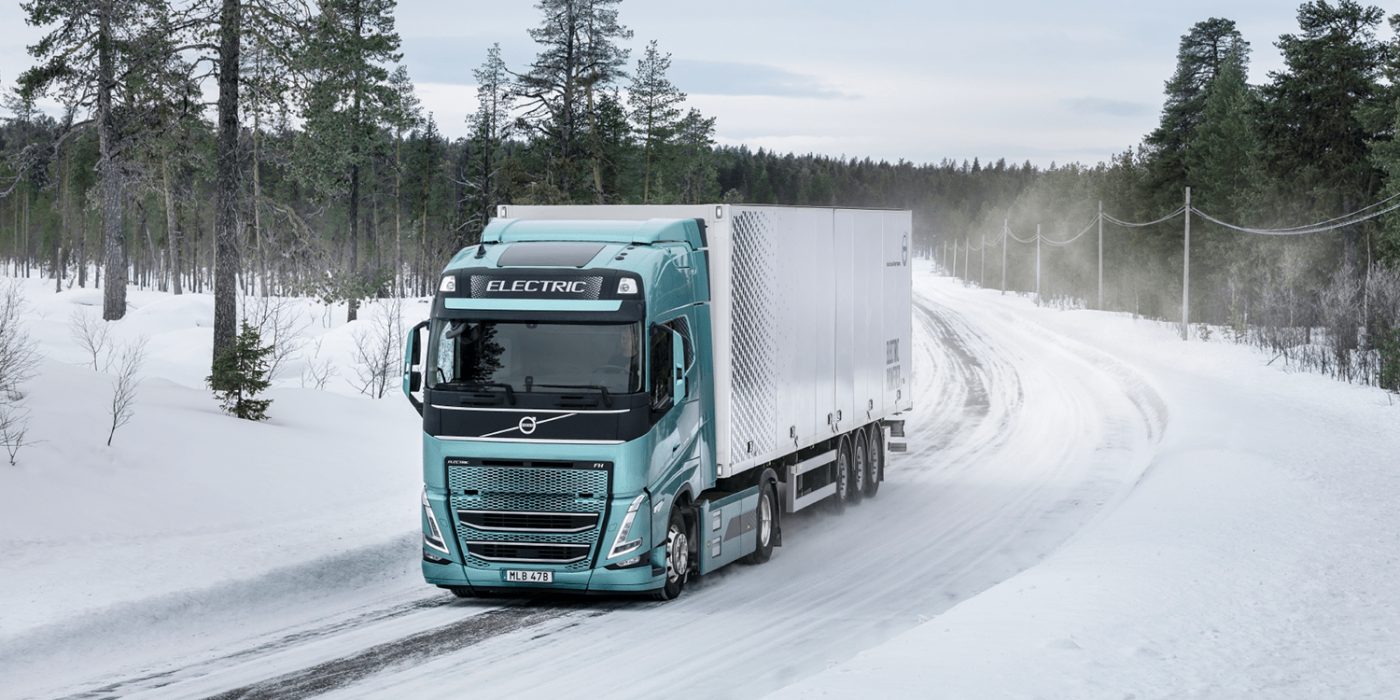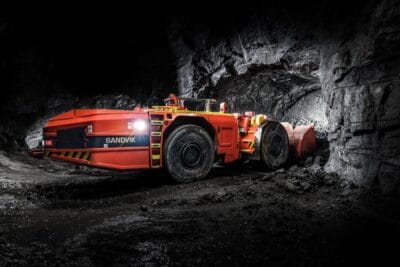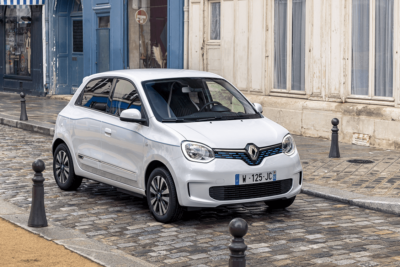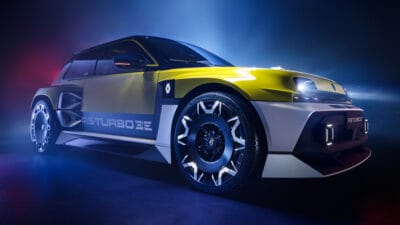Volvo takes the FH Electric out for Arctic testing
What happens to a battery-powered truck when the thermometer reads -25° C and strong winds are blowing? To find out, Volvo Trucks has completed winter tests with its upcoming 44-tonne FH Electric in the far north of Sweden – and introduced a preconditioning function in response.
The FH Electric is one of three new electric trucks that Volvo plans to start series production of next year. The electric truck, which can weigh up to 44 tonnes, has already been available to order for several months, and the Swedish company is positioning it as a workhorse in the field of regional and supra-regional transport – regardless of the climatic conditions of the respective location. “We have customers all over the world and our trucks need to perform everywhere, so harsh climate testing is essential, of course including our electric range,” expresses Jessica Sandström, SVP Product Management at Volvo Trucks.
With this in mind, Volvo Trucks has now subjected the FH Electric to tests in extreme winter conditions. For this purpose, the manufacturer went to the vicinity of the Arctic Circle in its home country. “When testing our trucks out in the field, close to the Arctic Circle in northern Sweden, we assess all the unpredictable elements of nature,” Jessica Sandström continues: “The wind builds up ice on the truck, which gives us great opportunities to make sure that everything performs correctly under extreme circumstances. Our tests have shown that it works very well to operate our electric trucks in these really cold environments.”
As a tangible result of the winter tests, Volvo points to a newly introduced function called ‘Ready to Run’. Depending on the need, this function prepares the vehicle for the working day by preheating the batteries and cab or cooling them in very warm weather. The optimum temperature for batteries is around +25 ° C. The driver can start the preheating or pre-cooling remotely via an app.
The preconditioning function is to be made available for the 44-tonne Volvo FH, FM and FMX Electric models. According to the manufacturer, production of this new trio will initially start with tractor units in the second half of 2022. Chassis should then follow in early 2023.
With the launch of the three new heavy-duty electric truck models, Volvo Trucks now has a line-up of six medium- and heavy-duty electric trucks from 16 to 44 tonnes. As mentioned, the FH Electric is intended to cover regional and interregional transport, the FM Electric is considered a versatile truck for local heavy transport and regional distribution and the FMX Electric is a vehicle for construction transport.
The new trio joins the existing Volvo FL Electric and FE Electric electric trucks for urban transport, which have already been in series production for Europe since 2019. Meanwhile, in North America, sales of a dedicated variant – the Volvo VNR Electric – started in December 2020. By 2030, Volvo Trucks aims for electric-powered trucks to account for around 50 per cent of sales.
Technical specifications of the upcoming heavy-duty electric trucks
Meanwhile, the new heavy trucks for regional transport and construction will be available in two alternative chassis heights – with wheelbases ranging from 3,800 to 6,700 mm and in configurations with two, three or four axles. As reported, they are based on the same platform as their diesel or gas-powered counterparts, and in doing so, Volvo Trucks says they will offer “a high degree of flexibility and are suitable for a wide range of transport requirements”.
Both the FH, FM and FMX have three electric motors coupled to Volvo Trucks’ I-Shift transmission. The manufacturer puts the combined electric motor output at 490 kW, the transmission torque at up to 28,000 Nm. The power take-off is available in electric (40 kW), electromechanical (70 kW) and transmission (150 kW) versions. The six-unit lithium-ion battery pack on board the e-trucks comes with an energy content of 540 kWh, which is supposed to favour a range of up to 300 kilometres already mentioned in advance.
Jonas Odermalm, Vice President of Electromobility Product Management at Volvo Trucks, shed some light on a special feature of the installed transmission drive unit: “Since the truck always starts in the highest possible gear, energy efficiency and savings are achieved thanks to a minimum of gear changes.” Of course, lower gears are available on steep roads or in starting situations that require more torque and control.
As for charging, the new trio has AC and DC charging capabilities. Up to 43 kW is supported in the AC range, and up to 250 kW in the DC range. In the latter case, Volvo Trucks says it is possible to recharge up to 80 per cent of the battery capacity in less than 90 minutes.
For buyers of the new electric trucks from the transport industry, Volvo Trucks is also putting together a package of service, maintenance and financing solutions if required. “For entrepreneurs, it is important that the transition to electric trucks is gradual, smooth and easy,” says Odermalm. “They will have a mixed fleet with different powertrains for many years and can continue to use systems like Dynafleet and the same service provider for all their Volvo trucks. The powertrain may be different, but the rest is very similar, so the move to electric trucks is seamless and logical.”
In addition to battery-electric trucks, Volvo Trucks also plans to expand its range to include fuel cell commercial vehicles. As is well known, Volvo is developing the fuel cell powertrains for heavy trucks together with Daimler Trucks, and series production is targeted here for the second half of the decade.
volvotrucks.com, volvotrucks.de (technical specs in German)





0 Comments